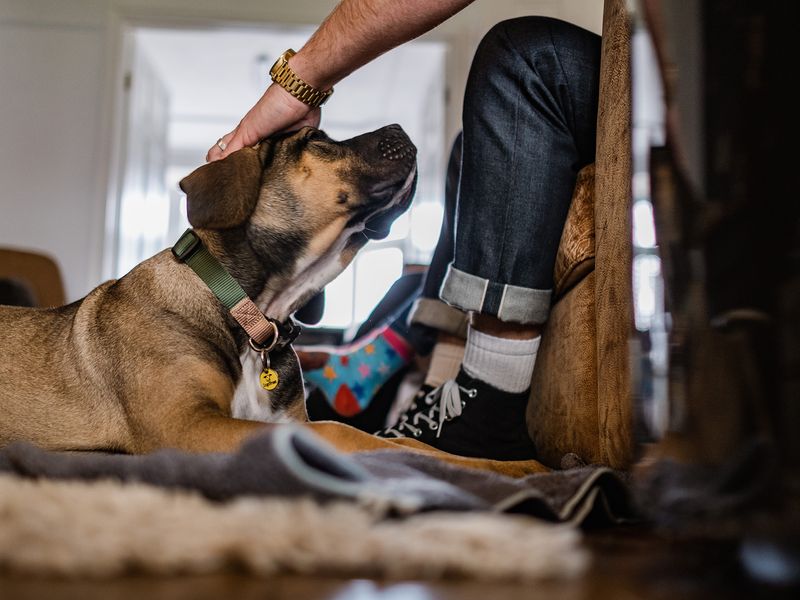How to train your dog to be calm, relax and settle
Help them get used to quiet time by themselves.

For a happy family life, it’s important that dogs learn to relax and have time on their own. It’s especially important for them to do this when you’re busy at home – with guests, making dinner or cleaning, or outside with friends at the pub or a café.
It’s hard for your dog to learn how to settle when there are distractions, so it’s best to begin practicing somewhere quiet. For some quick tips, watch our video.
To help you and your dog learn basic training techniques, it might be worth enrolling in some dog training lessons. Contact our free Behaviour Support Line for tailored advice.
Reward relaxed behaviours
To begin with you may just need to reward your dog for any behaviour that doesn’t involve staring at you, pulling on the lead, or barking.
Sit quietly on a chair with your dog on the lead and a blanket on the floor. Drop tiny bite-size treats to your dog as a reward for settling down on the blanket. Don’t say anything to your dog while doing this.
Gradually reward more relaxed behaviours. This will vary between dogs – some will automatically start lying down so you can quickly progress to rewarding your dog only for this behaviour.
Then move on to reward specific signs of relaxing like sighing, weight shifting and head resting.
Some dogs will take longer and might struggle to stop pulling on the lead or staring at you. If this is the case with your dog, you’ll need to take things more slowly by rewarding behaviours such as standing quietly, disengaging from people or sniffing their blanket.
Always make sure your dog is having a good time when settling, whether enjoying their toys, chews, or simply dozing and snoozing!
Increase the time your dog must be settled before you reward them
When your dog is relaxed, start increasing the time they must be settled before you reward them. Gradually build up by a couple of seconds each time over multiple training sessions.
Once your dog starts to get the hang of it and is shifting their weight so they’re comfortable and relaxed, you can start practising with them off lead. You need your dog to learn that they can settle whether they’re on or off-lead – useful skills for a lot of different situations.
Add in distractions
Slowly start building up distractions by practising the ‘settle’ in increasingly busy areas or ask a helper to create a distraction by walking past, progressing to more exciting activities like sweeping or skipping.
If your dog becomes unsettled or gets up, ignore them and wait until they settle again before rewarding them. If they won’t relax and settle, increase the distance from the distraction or make the distraction less interesting.
Once your dog has learnt the basic objective of being settled, try training in different locations with more distractions.
Try to resist telling your dog what to do during training, the aim is for them to learn for themselves to be calm and to relax. This is a form of learning that requires your dog to learn to settle without needing to be asked.
Related articles




